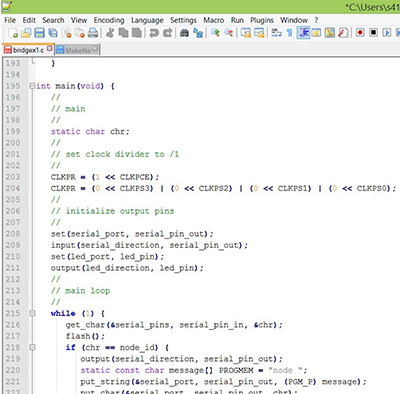The assignment was to build 2 boards and have them communicate to one another. To be honest I was lost for most of the lesson that Neil gave. But after some thought..I said Hey it really is not that difficult. I didn't even have to make 2 boards...bridge? nodes??? what's that??? So I took my old hello board and my motor board and wrote an elegant and simple programme. Here is the logic.
At steady state, the LED on the hello board is off and the LED on the motor board is on. When the button of the hello board is pressed, the LED on the Hello board turns on. at the same time one of the pins is set to high and sent over to the motor board. The motor board recieved the high from that pin and turns off it's LED. Wow Brilliant....check out the video.
So I showed the results to Steven our Local Instructor...and he smiled and decided to give some of us an introductory lesson on Networking. :) So... I guess what I did is not exactly networking.
Serial Networks
Serial Network dates back to the old days where we had modems, and Computers are hooked up to modems using this RS232 protocol. It basically transfers Analog data to the modem which digitizes it and sends it out or recieves it from another modem which is connected to another computer. The Rx and Tx and hooked up as it is. Now when we trying to hook up microcontrollers to microcontrollers, we need to swap and have the Rx connected to the Tx of the other controller. Although it is serial in nature, we are able to talk to multiple controllers using the Multidrop RS232. Which is what we are going to do.
So off I went to make by bridge and node boards. which are small boards with an ATtiny45 with serial pins and an LED. Although technically I could still use my hello and motor board. But it's fun to just cut some copper and smell a little solder.

The code can be downloaded here
https://www.dropbox.com/sh/0nev9vwcly3h3km/AACmhNFkDdAjlmQCmrUBQc5oa?dl=0
or